Why Lingyan Temple Should Be on Your Chinese Travel Itinerary
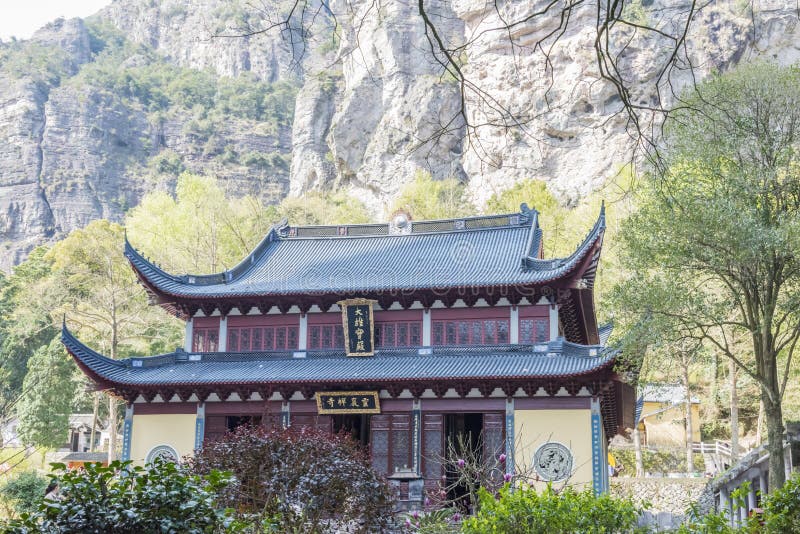
An Essential Guide to Visiting Lingyan Temple
In This Guide
- An Essential Guide to Visiting Lingyan Temple
- The Rich History and Legends of Lingyan Temple
- Main Highlights: What You Absolutely Can’t Miss
- Planning Your Visit: A Practical Guide
- Tickets: Prices, Booking, and Tips
- How to Get There: A Complete Transportation Guide
- Local Cuisine and Accommodation Nearby
- Frequently Asked Questions
- Final Thoughts on Your Trip
Nestled in the serene mountains of Jinan, Lingyan Temple (灵岩寺) stands as a testament to China’s rich spiritual heritage and architectural grandeur. Often overlooked by the typical tourist trail, this ancient temple offers a unique opportunity to step back in time and immerse yourself in the profound history and culture that define Chinese Buddhism.
As you approach the temple, you’ll find yourself surrounded by lush landscapes, where the air is filled with tranquility and whispers of the past. Lingyan Temple is not only a place of worship but also a treasure trove of artistic wonders, showcasing over a thousand years of craftsmanship through its stunning clay figures and intricate sculptures. Each figure tells a story, revealing the nuances of Buddhist iconography and the skill of artisans long gone.
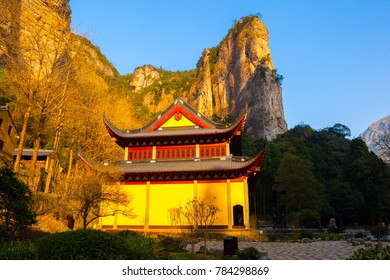
Lingyan Temple.
The temple complex is home to one of the second largest burial grounds for monks in China, second only to the famed Shaolin Temple. It’s here that you can reflect on the lives of the spiritual leaders who shaped Buddhism in the region, their steles standing as silent guardians of history.
For the adventurous, the temple’s location invites exploration, with scenic mountain trails and breathtaking views awaiting those willing to climb. Whether you are an avid hiker or a history buff, Lingyan Temple promises an enriching experience that transcends mere sightseeing.
As you prepare for your visit, let this guide serve as your compass to navigate through the spiritual and historical depths of Lingyan Temple, ensuring that your journey is as meaningful as it is memorable.
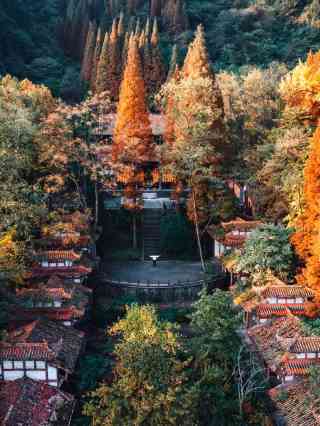
Lingyan Temple.
The Rich History and Legends of Lingyan Temple
A Journey Through Time: The History and Legends of Lingyan Temple
Lingyan Temple, or 灵岩寺, is not merely a place of worship; it is a treasure trove of history and legends nestled in the heart of Shandong Province, China. Dating back to the 7th century during the Tang Dynasty, this ancient temple complex has witnessed centuries of spiritual devotion, architectural evolution, and rich cultural heritage.
Historical Significance
Lingyan Temple’s roots trace back over 1,300 years, making it one of the oldest Buddhist temples in the region. Originally founded as a small monastic retreat, it grew in stature and prominence, becoming a revered site for monks and laypeople alike. The temple’s name, which translates to “Spirit Rock Temple,” reflects its spiritual ambiance, enhanced by its picturesque mountain setting.
The temple is particularly known for being the second-largest burial ground for Buddhist monks in China, second only to the famed Shaolin Temple. This distinction speaks volumes about its historical importance, as it served as the final resting place for numerous celebrated monks throughout the ages. The stupas that mark their graves are a testament to the high regard in which these spiritual leaders were held.
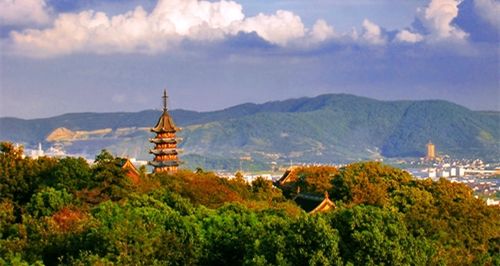
Lingyan Temple.
Architectural Marvels
Visitors to Lingyan Temple are greeted by stunning architecture that echoes the styles of different dynasties, showcasing the temple’s long history. The complex features intricately carved wooden structures, stone sculptures, and vibrant clay figures, each telling a unique story. Among the highlights are the lifelike clay statues of monks that date back over a thousand years, their vibrant colors and distinct features still intact. These statues serve as a reminder of the artistic prowess of ancient artisans and the spiritual significance of the figures they represent.
Legends and Myths
Lingyan Temple is steeped in legends that enhance its allure. One of the most captivating stories involves the Dragon King of the Yellow River. According to local lore, the Dragon King, frustrated by the drought affecting the region, sought the help of the temple’s monks. In response, the monks performed rituals and prayers, ultimately appeasing the Dragon King who then brought forth rain, thus saving the villagers from despair. This legend underscores the temple’s historical role as a beacon of hope and spiritual guidance in times of crisis.
Another intriguing tale tells of a celestial being who descended from the heavens to bless the temple. It is said that this divine figure imparted wisdom to the monks, leading to a golden age of enlightenment and learning at Lingyan. The stories of divine intervention and celestial beings have contributed to the temple’s reputation as a sacred site, drawing pilgrims and tourists alike who seek spiritual solace.

Lingyan Temple.
The Temple Today
Today, Lingyan Temple remains an essential destination for those interested in exploring China’s rich religious and cultural heritage. Despite its remote location, the temple attracts visitors who are eager to escape the bustling tourist trails. The serene environment, combined with the profound historical and mythical narratives, offers a unique experience for travelers keen on delving into the spiritual and artistic legacy of China.
In addition to its historical and architectural significance, Lingyan Temple also offers opportunities for mountain climbing and exploring the surrounding natural beauty, making it a perfect blend of culture and adventure. Whether you are a history buff, a spiritual seeker, or an outdoor enthusiast, Lingyan Temple promises a rich journey into the heart of China’s past.
Main Highlights: What You Absolutely Can’t Miss
Discovering Lingyan Temple: Unmissable Highlights
Nestled amidst the stunning landscapes of Changqing District, Lingyan Temple (灵岩寺) stands as a testament to China’s rich religious heritage and architectural grandeur. A journey to this ancient site promises not only spiritual enrichment but also a deep dive into the history and artistry that have shaped Chinese culture over centuries. Here are the key highlights that make Lingyan Temple a must-visit for any traveler.
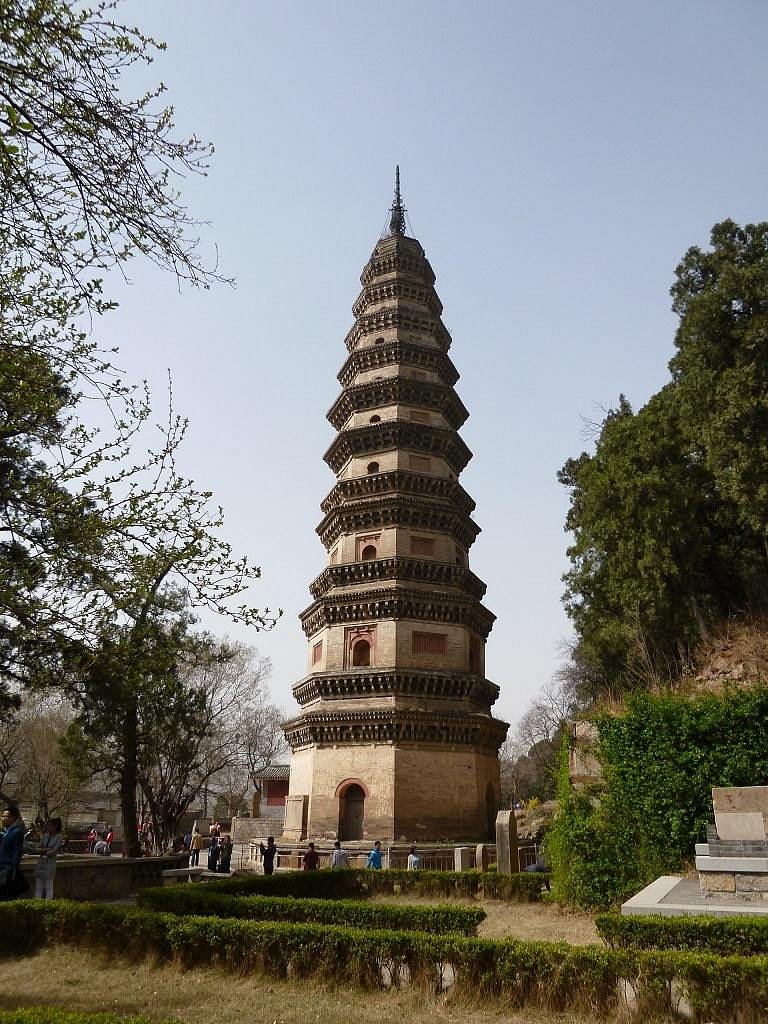
Lingyan Temple.
1. Ancient Clay Statues
One of the temple’s most remarkable features is its collection of ancient clay figures, some dating back over a thousand years. These lifelike statues, showcasing distinct facial features, hand gestures, and vibrant robes, reflect the exquisite craftsmanship of the era. As you wander through the temple halls, take a moment to marvel at the vivid colors that have withstood the test of time.
2. The Burial Stupas
Lingyan Temple is home to the second-largest burial ground for esteemed monks in China, following the famed Shaolin Temple. The stupas, or burial mounds, are dedicated to head monks who have shaped Buddhist thought and practice throughout the centuries. This solemn area provides a glimpse into the spiritual legacy of these influential figures and is a poignant reminder of the temple’s historical significance.
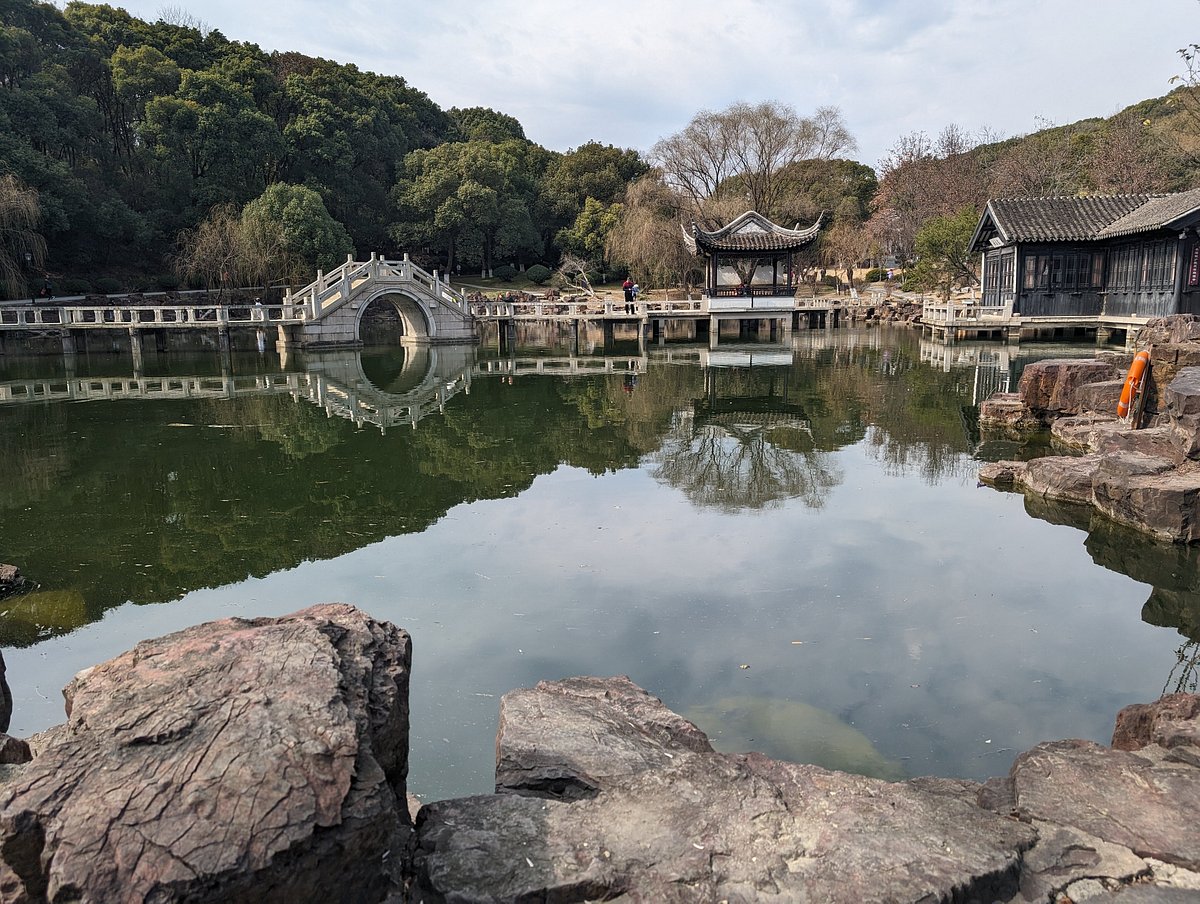
Lingyan Temple.
3. Breathtaking Mountain Scenery
The temple is beautifully situated within a mountainous landscape that adds to its serene atmosphere. The surrounding hills offer numerous hiking trails, allowing visitors to explore the natural beauty of the region. A trek to the top rewards you with panoramic views of the valley and the temple complex, making it a perfect spot for photography and reflection.
4. Hidden Caves and Historical Relics
Venture further up the mountains to discover hidden caves that have served as meditation spots for monks throughout history. These caves, along with the temple’s ancient relics, tell stories of spiritual seekers who found solace in this tranquil environment. The alignment of ponds and the intricate designs of the temple structures enhance the mystical experience of your visit.
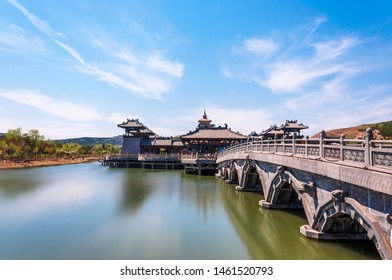
Lingyan Temple.
5. Peaceful Atmosphere Away from Crowds
Unlike many popular tourist destinations, Lingyan Temple offers a tranquil escape from the bustling crowds. Its remote location means that you can enjoy a peaceful exploration of the site without the distractions often found in more commercialized areas. This serene environment is perfect for introspection and appreciating the beauty of both nature and spirituality.
6. Cultural Significance and Artistry
As one of the oldest temples in the region, Lingyan Temple stands as a significant cultural landmark. The intricate wooden architecture and beautiful carvings reflect the artistic style of various dynasties, showcasing the evolution of Chinese temple architecture over the centuries. Taking the time to appreciate these details will deepen your understanding of the artistry that has been preserved here.
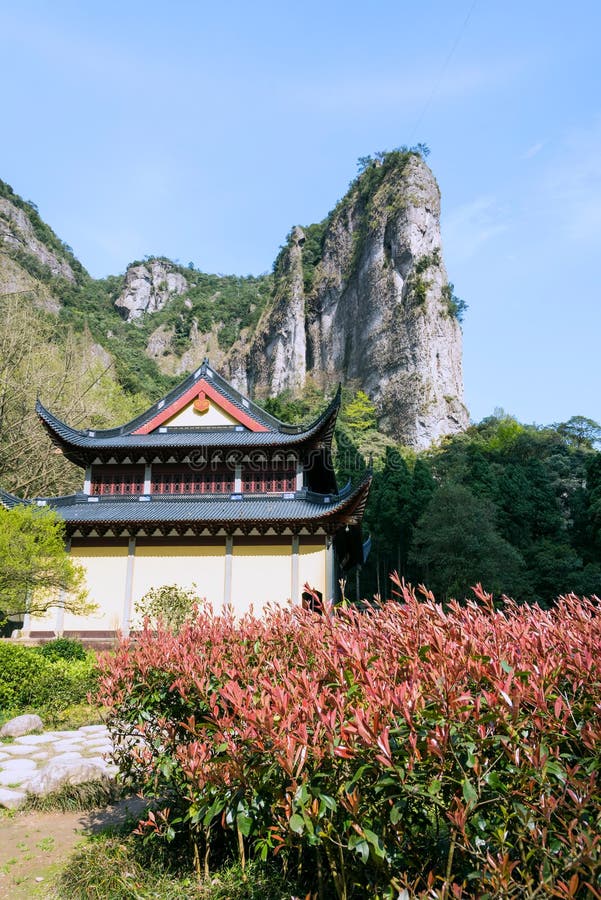
Lingyan Temple.
Planning Your Visit
- Location: Wande Town, Changqing District, Jinan, China.
- Opening Hours: Daily from 7:55 AM to 6:28 PM.
- Travel Tip: Consider visiting on weekdays to avoid larger crowds and fully immerse yourself in the temple’s peaceful ambiance.
Whether you are a history enthusiast, a spiritual seeker, or simply a lover of nature and art, Lingyan Temple offers a unique glimpse into China’s past and presents an enriching experience that you won’t want to miss.
Planning Your Visit: A Practical Guide
Planning Your Visit to Lingyan Temple
Nestled in the picturesque mountains of Jinan, Lingyan Temple (灵岩寺) is a serene retreat steeped in history and architectural beauty. Known for its stunning clay figures and rich cultural significance, this ancient temple offers a unique glimpse into China’s spiritual heritage. Here’s your practical guide to planning an unforgettable visit.

Lingyan Temple.
Getting There
Location:
Lingyan Temple is located in Wande Town, Changqing District, Jinan, Shandong Province. This site is a bit off the beaten path, which adds to its charm and tranquility.
Transportation:
– By Car: The temple is approximately a 1-hour drive from downtown Jinan. Renting a car or hiring a taxi is recommended for convenience.
– Public Transport: There are limited public transport options, so check local bus routes or arrange a private tour for easier access.
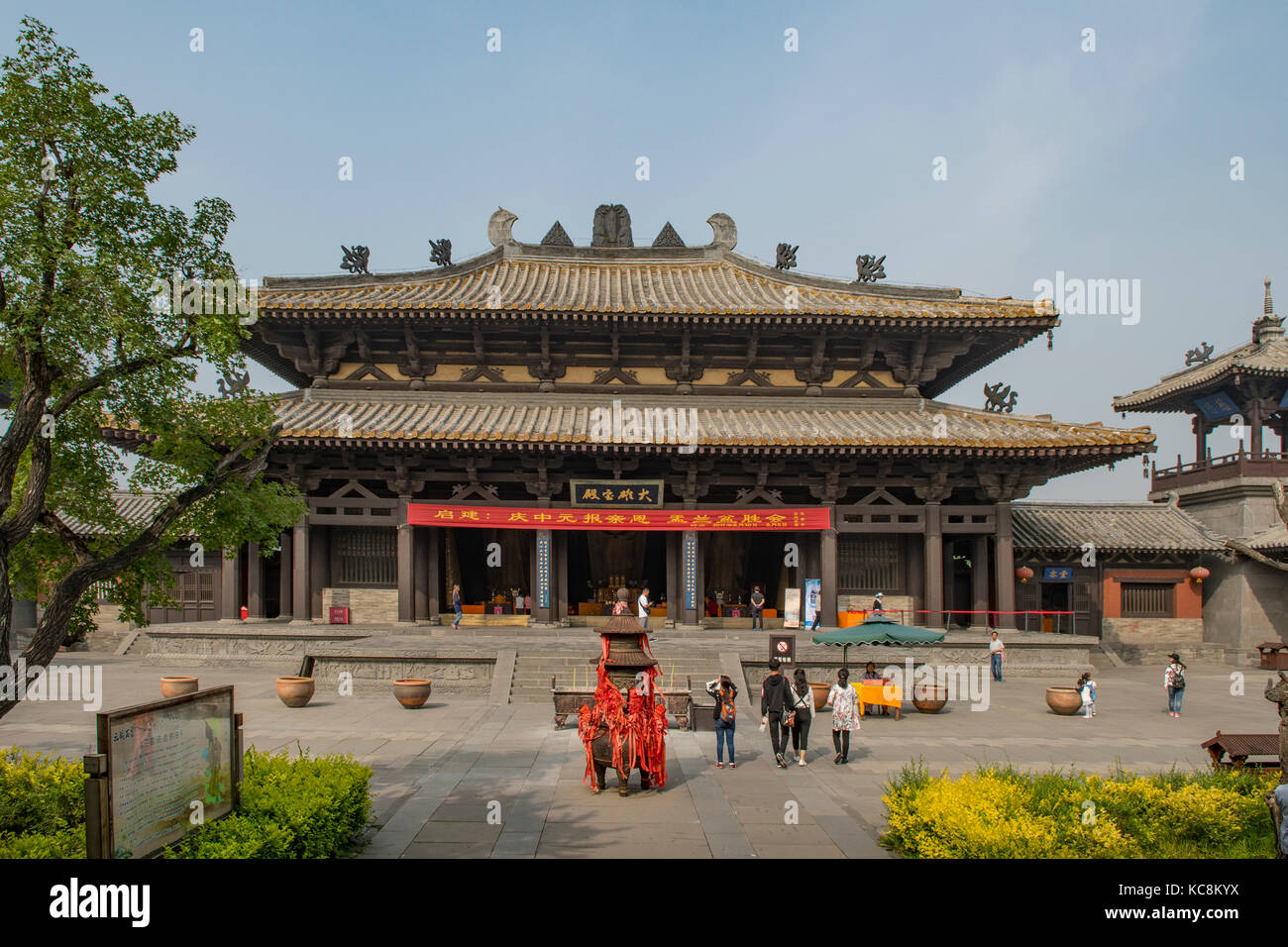
Lingyan Temple.
Opening Hours
- Daily: 7:55 AM – 6:28 PM
Make sure to arrive early to enjoy the peaceful morning ambiance before the day’s visitors arrive.
Admission Fees
- Entry Fee: There is a nominal entrance fee (check local listings for the most current pricing). This fee contributes to the maintenance and preservation of this historical site.
Highlights of the Temple
-
Ancient Clay Figures:
Marvel at the intricate clay figures that date back over a thousand years. Each figure showcases unique facial features, hand gestures, and vivid colors, reflecting the artistry of ancient craftsmen. -
Stupas of Head Monks:
Explore the impressive burial ground, the second largest in China after Shaolin Temple, where revered monks from centuries past are interred. -
Mountain Climbing:
For the more adventurous, hiking up to the top of the surrounding mountains provides stunning views and a sense of accomplishment. The trail includes a stairway that can take about an hour to ascend. -
Caves and Ponds:
At the summit, discover caves and beautifully aligned ponds, which are ideal for quiet contemplation and photography.
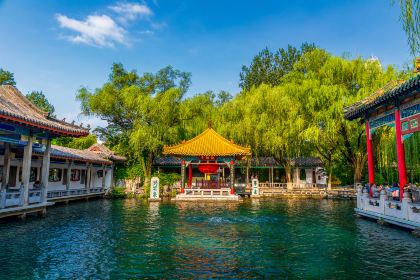
Lingyan Temple.
Tips for Your Visit
- Dress Comfortably: Wear comfortable shoes suitable for walking and climbing, as the terrain can be uneven.
- Respect the Environment: While enjoying the natural beauty, please be mindful of litter and help keep the area clean.
- Plan for a Full Day: Allow enough time to explore the temple and surrounding area thoroughly. Many visitors recommend spending an entire day here to fully appreciate its beauty and historical significance.
- Bring Water and Snacks: There are limited facilities, so it’s wise to pack refreshments for your visit.
Nearby Attractions
While Lingyan Temple is a destination in itself, consider exploring these nearby attractions:
– Daming Lake: A scenic area perfect for leisurely walks and boat rides.
– Qianfoshan (Thousand Buddhas Mountain): Known for its historic significance and beautiful landscapes.
Conclusion
Lingyan Temple is more than just a stop on your travel itinerary; it’s a place to connect with ancient history and natural beauty. With its rich cultural heritage and tranquil environment, it promises an enriching experience for those who venture off the usual tourist path. Prepare to be captivated by the serenity and stories that echo through its ancient walls.
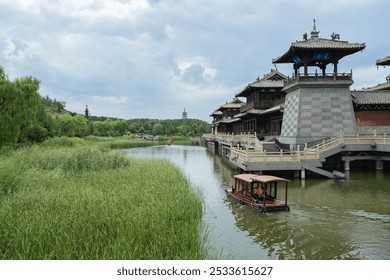
Lingyan Temple.
Tickets: Prices, Booking, and Tips
Ticket Information for Lingyan Temple (灵岩寺)
Visiting Lingyan Temple, a stunning historical site nestled in the scenic mountains of Jinan, offers an enriching experience steeped in Chinese culture and history. To ensure a smooth visit, here’s everything you need to know about ticket prices, booking options, and some helpful tips.
Ticket Prices
- General Admission:
- Adults: Approximately CNY 30 (around $5 USD)
- Students and Seniors: Discounted tickets may be available, typically around CNY 15 (approximately $2.50 USD). It’s advisable to carry valid identification to avail of these discounts.
Booking Options
-
On-Site Purchase: Tickets can be purchased at the entrance of the temple. This is a straightforward option, especially for spontaneous visits.
-
Online Booking: For those who prefer to plan ahead, tickets can also be booked through various travel platforms or local tourism websites. Booking in advance may provide additional discounts and ensure entry during peak seasons.
Opening Hours
- Daily: The temple is open from 7:55 AM to 6:28 PM. It’s recommended to arrive early to fully immerse yourself in the serene atmosphere and avoid the midday crowds.
Tips for Your Visit
-
Plan Your Trip: Lingyan Temple is located in a somewhat remote area, approximately an hour’s drive from downtown Jinan. Consider arranging transportation in advance, whether through a rental car, taxi, or guided tour.
-
Prepare for Climbing: The temple complex features beautiful mountain trails, so wear comfortable shoes and be ready for some climbing. The trek to the top rewards you with breathtaking views and a chance to explore caves and ancient structures.
-
Respect the Space: As a site of spiritual significance, maintain a respectful demeanor. Avoid loud conversations, and remember to dispose of trash properly to preserve the natural beauty of the surroundings.
-
Connect with History: Take your time to appreciate the ancient clay figures and burial stupas of head monks. Each statue tells a story, and the vibrant colors have stood the test of time, making them a highlight of your visit.
-
Explore Nearby Attractions: Consider extending your trip to include nearby sites such as the Changqing Wolong Valley or Bizhi Tower, both of which offer additional insights into the region’s history and natural beauty.
By understanding the ticketing process and preparing for your visit, you can enrich your experience at Lingyan Temple, making it a memorable stop on your journey through China’s rich cultural tapestry.
How to Get There: A Complete Transportation Guide
Getting to Lingyan Temple: Your Comprehensive Transportation Guide
Nestled in the picturesque mountains of Jinan, Lingyan Temple (灵岩寺) is a hidden gem that offers both historical significance and breathtaking scenery. While its remote location adds to its charm, it can make getting there a bit challenging. Fear not! This guide will help you navigate your way to this ancient site seamlessly.
1. Arriving in Jinan
Before you can reach Lingyan Temple, you’ll need to arrive in Jinan, the capital city of Shandong Province. Here are the primary modes of transportation to reach Jinan:
-
By Air: Jinan Yaoqiang International Airport (TNA) serves both domestic and international flights. Upon arrival, you can take a taxi or a shuttle bus to the city center, which is approximately 30 kilometers away.
-
By Train: Jinan Railway Station is a major hub with high-speed trains connecting to cities like Beijing, Shanghai, and Guangzhou. From the station, you can easily access local transportation options.
-
By Bus: Long-distance buses also operate from neighboring cities and provinces, making it convenient to reach Jinan by road.
2. From Jinan to Lingyan Temple
Once you’re in Jinan, here are your best options to reach Lingyan Temple:
-
By Taxi: The most straightforward way is to take a taxi from Jinan city center directly to Lingyan Temple. The journey typically takes about 1 hour and will cost around 100-150 RMB (approximately $15-22). Ensure to show the driver the temple’s address in Chinese: “济南灵岩寺, 常青区, 济南市, 山东省”.
-
By Public Bus: For a more economical option, you can take Bus 36 or Bus 151 from the city center toward Changqing District. Once you reach the Changqing area, transfer to a local bus (like the 805) that goes to Lingyan Temple. This option may take longer, around 1.5 to 2 hours, but offers a chance to experience local life.
-
By Private Car or Tour: If you prefer a more personalized experience, consider hiring a private car or joining a guided tour that includes Lingyan Temple. Several travel agencies in Jinan offer day trips that combine various attractions with transportation included.
3. Accessibility Considerations
Lingyan Temple is located in a mountainous area, so be prepared for some walking and climbing. The temple grounds include steps and uneven paths, which may not be suitable for everyone. If you have mobility concerns, consider discussing transportation options with your travel guide or driver in advance.
4. Tips for Your Journey
-
Plan Ahead: Given its remote location, it’s wise to check the bus schedules or book your taxi in advance, especially during peak tourist seasons.
-
Timing: The temple opens daily from 7:55 AM to 6:28 PM. Aim to arrive early to avoid the crowds and fully enjoy the serene atmosphere.
-
Cultural Etiquette: As you explore Lingyan Temple, remember to be respectful of the sacred site. Dress modestly and observe local customs, especially in areas designated for prayer and meditation.
5. Alternative Attractions Nearby
If time permits, consider exploring nearby attractions such as Changqing Wolong Valley or the Bizhi Tower. They are conveniently located close to Lingyan Temple and can add to your cultural experience.
Conclusion
Visiting Lingyan Temple is a rewarding experience that transports you back in time while offering stunning views of nature. With this transportation guide in hand, you’re well-equipped to make the journey to this remarkable site. Enjoy your adventure in Jinan and the rich tapestry of Chinese history and culture that awaits you at Lingyan Temple!
Local Cuisine and Accommodation Nearby
Visiting Lingyan Temple (灵岩寺) offers not only a dive into ancient Chinese spirituality and artistry but also an opportunity to savor the local flavors and find comfortable lodging nearby. Here’s a guide to experiencing the best of Jinan’s culinary delights and accommodations during your visit.
Local Cuisine
After exploring the serene surroundings of Lingyan Temple, treat your taste buds to the rich and diverse flavors of Shandong cuisine. This region is known for its emphasis on fresh ingredients, bold flavors, and unique cooking techniques. Here are some must-try dishes and local eateries:
-
Jinan Braised Carp (济南红烧鲤鱼): A signature dish of the region, this carp is cooked in a savory sauce with soy and sugar, resulting in a delightful balance of sweet and salty flavors. You can find this delicacy at local restaurants like Xiaoguan Restaurant (小馆) located close to the temple.
-
Peking Duck (北京烤鸭): While this dish hails from Beijing, many local restaurants serve their own delicious renditions. Try Da Dong Peking Duck Restaurant (大董烤鸭店) in Jinan for a culinary experience that will not disappoint.
-
Shandong Dumplings (山东饺子): These delightful dumplings are filled with fresh ingredients like pork, vegetables, or seafood. Dumpling House (饺子馆) nearby offers a variety of styles and fillings to satisfy your cravings.
-
Steamed Buns (包子): Perfect for a quick snack, these fluffy buns come stuffed with pork, vegetables, or sweet red bean paste. Head to Jinan Street Food Market (济南小吃街) for a vibrant atmosphere and a taste of local street food.
Accommodation Nearby
For those looking to rest after a day of exploration, Jinan offers a range of accommodations catering to different preferences and budgets. Here are some recommended places near Lingyan Temple:
-
Huashan Hotel (华山宾馆): Nestled amidst the lush landscapes, this hotel offers comfortable rooms and modern amenities. Its proximity to Lingyan Temple makes it a convenient choice for travelers seeking tranquility and accessibility.
-
Changqing International Hotel (长清国际酒店): Located about a 30-minute drive from the temple, this upscale hotel features spacious rooms and an on-site restaurant serving local and international cuisine. Perfect for families or those wanting a touch of luxury.
-
Xinghe Hotel (星河酒店): A budget-friendly option, Xinghe Hotel provides clean, comfortable rooms at an affordable price. It’s ideally situated for travelers looking to explore both the temple and nearby attractions.
-
Hostel Options: For backpackers or budget-conscious travelers, Backpackers Hostel Jinan offers a friendly atmosphere and shared accommodations. It’s a great way to meet fellow travelers while keeping costs low.
Conclusion
Lingyan Temple is not just a place of historical and cultural significance; it’s also surrounded by delightful culinary experiences and comfortable accommodations. Whether you’re indulging in local dishes or resting in one of Jinan’s hotels, your visit promises to be an enriching journey through time and taste. Enjoy your exploration of this hidden gem in Shandong Province!
Frequently Asked Questions
Your Essential Guide to Lingyan Temple: FAQs
1. What is Lingyan Temple and why should I visit?
Lingyan Temple (灵岩寺) is one of the oldest and most significant Buddhist temples in China, renowned for its stunning architecture, intricate clay figures dating back over a thousand years, and serene natural surroundings. It offers a unique glimpse into China’s spiritual heritage and is perfect for travelers seeking a peaceful retreat away from bustling tourist spots.
2. Where is Lingyan Temple located?
Lingyan Temple is situated in Wande Town, Changqing District of Jinan, Shandong Province, China. It is approximately one hour’s drive from downtown Jinan, making it a worthwhile day trip for those looking to explore the region’s rich history.
3. What are the opening hours of the temple?
The temple is open daily from 7:55 AM to 6:28 PM. Visitors are encouraged to arrive early to fully appreciate the site without the crowds, especially since it is less frequented by typical tour groups.
4. How can I get to Lingyan Temple?
While public transportation options exist, the most convenient way to reach Lingyan Temple is by taxi or car rental. The remote location means that it may not be easily accessible via public buses, so planning your trip in advance is advisable.
5. What should I wear when visiting Lingyan Temple?
Visitors should wear comfortable clothing and sturdy shoes, especially if you plan on hiking in the nearby mountainous areas. As Lingyan Temple is a sacred site, modest attire is appreciated, and it’s recommended to dress respectfully.
6. Are there any notable attractions within the temple complex?
Yes! The temple features spectacular clay figures, each uniquely designed with vibrant colors. Additionally, the burial stupas of head monks throughout history are noteworthy; this site is recognized as the second-largest burial ground for monks in China after the famous Shaolin Temple.
7. Is there an entrance fee?
While the detailed fee structure may change, there is typically an entrance fee for Lingyan Temple. It’s best to check for the latest information before your visit, as this can vary seasonally.
8. What other activities can I enjoy near Lingyan Temple?
Visitors can explore the surrounding natural beauty, including hiking trails leading to breathtaking viewpoints. Nearby attractions include the Changqing Wolong Valley, offering stunning landscapes and opportunities for further exploration. Consider spending a full day to immerse yourself in the tranquility and history of this remarkable area.
Whether you’re a history buff, a nature lover, or simply seeking a serene escape, Lingyan Temple promises an enriching experience that connects you to China’s profound cultural heritage.
Final Thoughts on Your Trip
Visiting Lingyan Temple is more than just a stop on a travel itinerary; it’s an immersive journey into the heart of Chinese history and spirituality. Nestled in the tranquil mountains of Jinan, this ancient temple beckons travelers with its serene ambiance, rich cultural heritage, and breathtaking natural surroundings.
Embrace the Serenity
As you wander through the temple grounds, take a moment to soak in the peaceful atmosphere that envelops you. The absence of large crowds allows for a deeper connection with the spiritual essence of the site. The intricately crafted clay figures, each telling a silent story of devotion, serve as a testament to the artistry and craftsmanship of centuries past.
A Hidden Gem
Lingyan Temple may be a bit off the beaten path, but it is precisely this remoteness that adds to its charm. Many travelers leave with a sense of discovery, having stumbled upon a hidden gem that feels untouched by time. The extensive burial grounds for head monks stand as a poignant reminder of the temple’s historical significance, ranking it as the second largest of its kind after the famed Shaolin Temple.
Adventure Awaits
For those seeking a blend of adventure and culture, the surrounding mountains offer invigorating hiking trails that lead to stunning vistas and hidden caves. The harmony of nature and history creates an experience that is both exhilarating and reflective.
Concluding Your Journey
As your visit to Lingyan Temple comes to a close, take with you not just memories, but a renewed appreciation for China’s rich tapestry of history and spirituality. Whether you found solace in the tranquil gardens, marveled at the historical artifacts, or simply enjoyed the breathtaking landscapes, Lingyan Temple offers a unique glimpse into the spiritual heritage of China.
Travelers who venture to this sacred site leave enriched, inspired, and longing to share the stories of their experience with others. So as you plan your next adventure, consider Lingyan Temple—where history, spirituality, and nature converge in a truly unforgettable way.